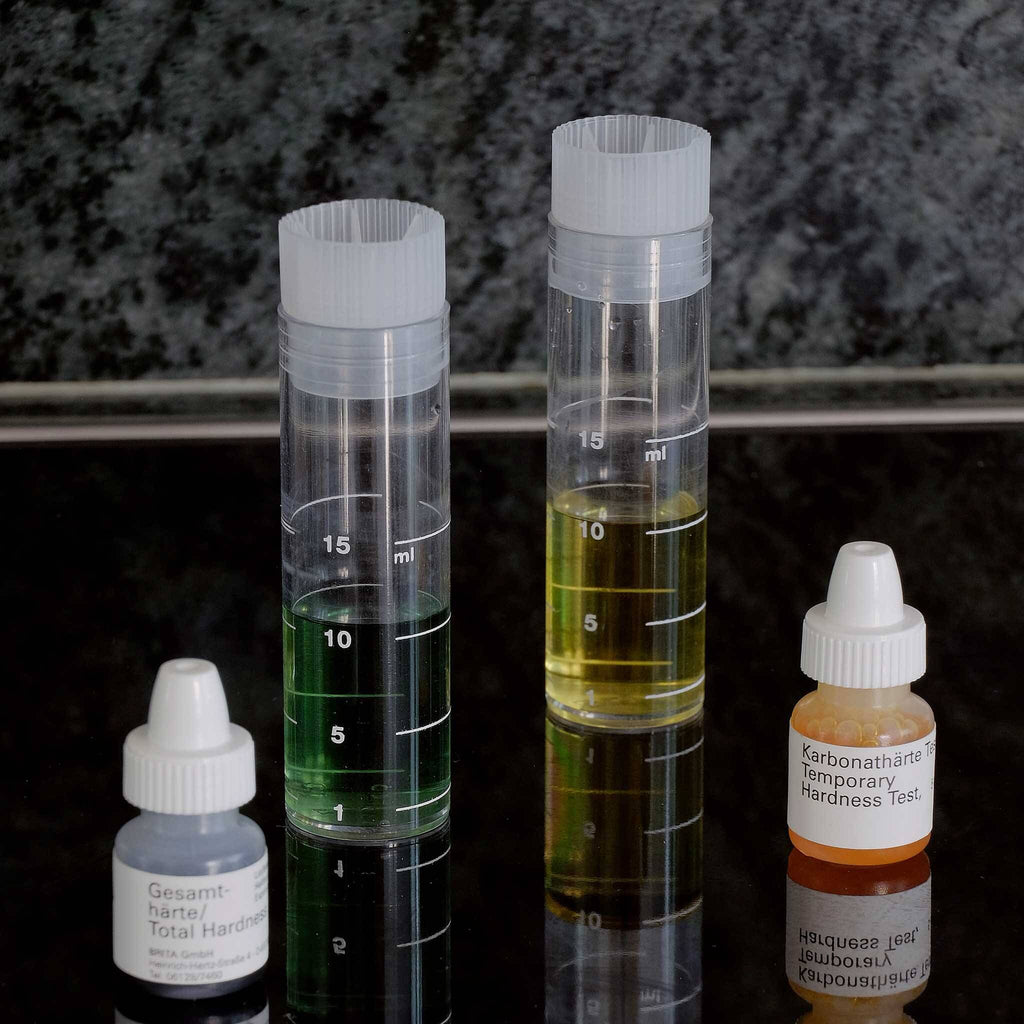How to use the Water Calculator
by Simone Forgia

How it works
Required values

GH and KH test kit
To measure general and carbonate hardness all you need to do is buy a GH and KH kit. These kits are easily found in aquarium shops as they are also used for fish, alternatively they can also be found online as for example at the following link.
Once in possession of the bottles, simply take a small sample of the water you want to measure and count the number of drops required until the solution changes colour. Usually these kits are calibrated in German degrees (°dH) and as our calculator requires the data entered to be in ppm (parts per million) the values require the use of a converter (we suggest this one). We recommend anyway to consult the instructions of the test kit for more detailed information on the operation.
TDS / EC Reader
For the measurement of the total dissolved solids, it is necessary to purchase a TDS meter. These devices measure the electrical conductivity of the water and use this parameter to estimate the TDS as there is a close correlation between the total dissolved solids in the water and its conductivity. For greater accuracy we recommend that you purchase a meter that works with a conversion ratio of 0.65 or if you cannot find one, measure the electrical conductivity (EC) in µS (micro siemens) and manually multiply this by 0.65. So if we measure for example an EC value of 180 µS and multiply it by 0.65 we get a TDS of 117 ppm.
Hardness and buffer solutions
To prepare the two solutions that affect the GH and KH values you will need distilled water, magnesium sulphate (also known as Epsom salt or English salt), sodium bicarbonate (also known as baking soda) and the recipes are as follows:
- Hardness solution: dissolve 2.45g of magnesium sulphate in 1L of distilled water.
- Buffer solution: dissolve 1.68g of sodium bicarbonate in 1L of distilled water.
For good accuracy you would need a scale that weighs to the hundredth of a gram, alternatively you could use a scale that weighs to the tenth of a gram and double the quantities.
Finding the right parameters

Once you have the values of your water and have prepared the required solutions, you can finally enter the data and start experimenting with the calculator. First of all, it is important to establish which parameters you want to achieve; these can be those defined by the Specialty Coffee Association (SCA) but can also be different, depending on your own preferences. When dealing with values expressed in mg/L, they can generally be converted on a 1:1 basis for the use of the calculator; therefore 1 mg/L = 1 ppm.
| SCA parameters | ppm |
| GH - general hardness |
68 |
| KH - carbonate hardness | 40 |
| TDS - total dissolved solids |
150 |
By moving the three sliders you can see the parameters changing, so you can move them individually until you get close to the target. Once you have done this, in the graph below you will find the quantities for recreating water with the values just calculated.

Checking the result
Once you have created your ideal water, we recommend measuring the GH, KH and TDS values of the water as you did for the starting water in order to check whether they correspond to the values determined by the calculator. We also recommend tasting the water to see if it has any undesirable flavours, as well as doing a visual check. If everything has gone as planned, all that remains is to use it over the next few days and enjoy the different coffee nuances.
Summary of materials needed
- GH and KH test kit
- TDS / EC meter
- Magnesium sulphate
- Sodium bicarbonate
- Distilled water
Take me to the calculator
Notes and credits:
The team at The Lever have personally tested these recipes but take no responsibility in the event of any ill-feeling.
This water calculator is an interactive version based on the remineralisation calculator first created by Barista Hustle and modified by The Lever to take into account the dilution of a "pre-existing water" with values above the target.
Simone, editor of The Lever, embarked on a new journey starting from July 2025.
He is volunteering in Nicaragua to learn about coffee farming and is documenting his journey through physical letters sent directly to your doorstep.
Curious to hear his experiences?